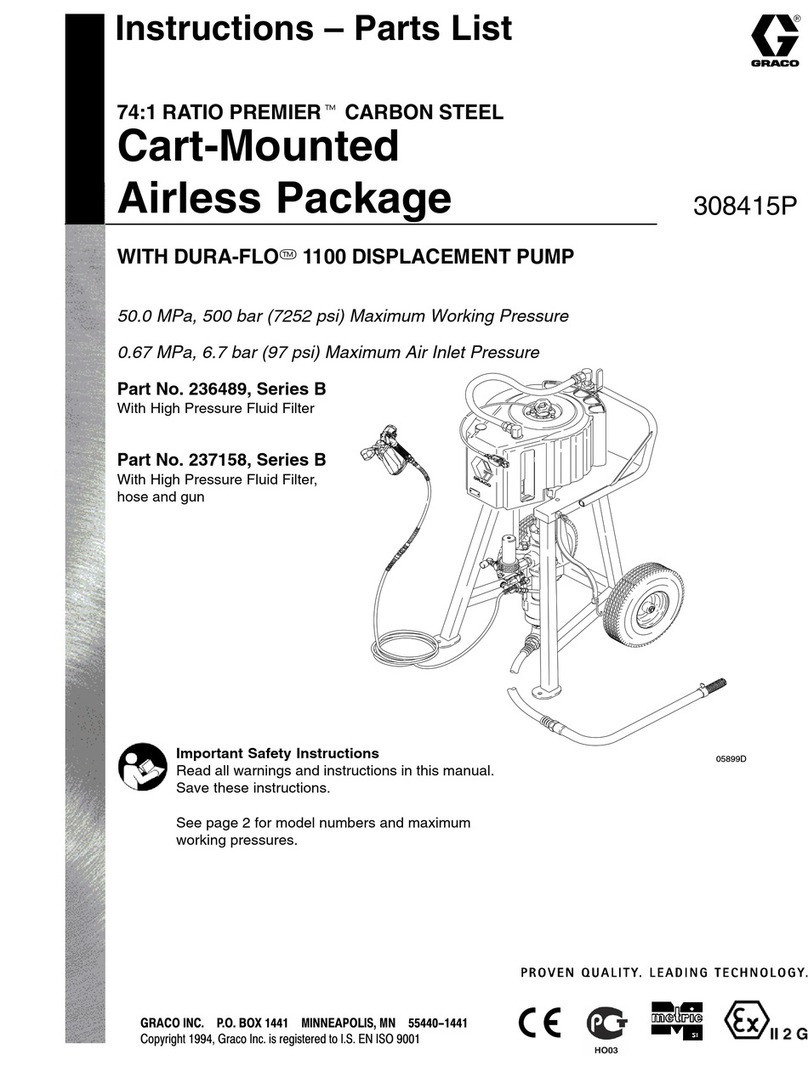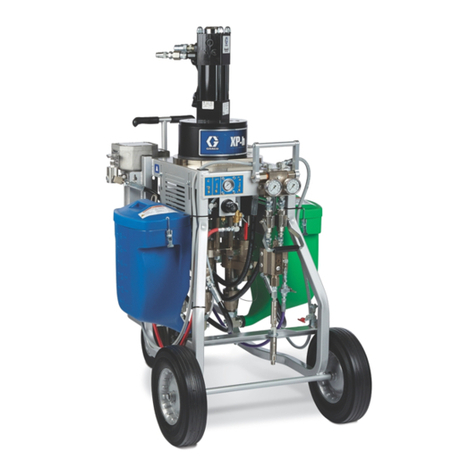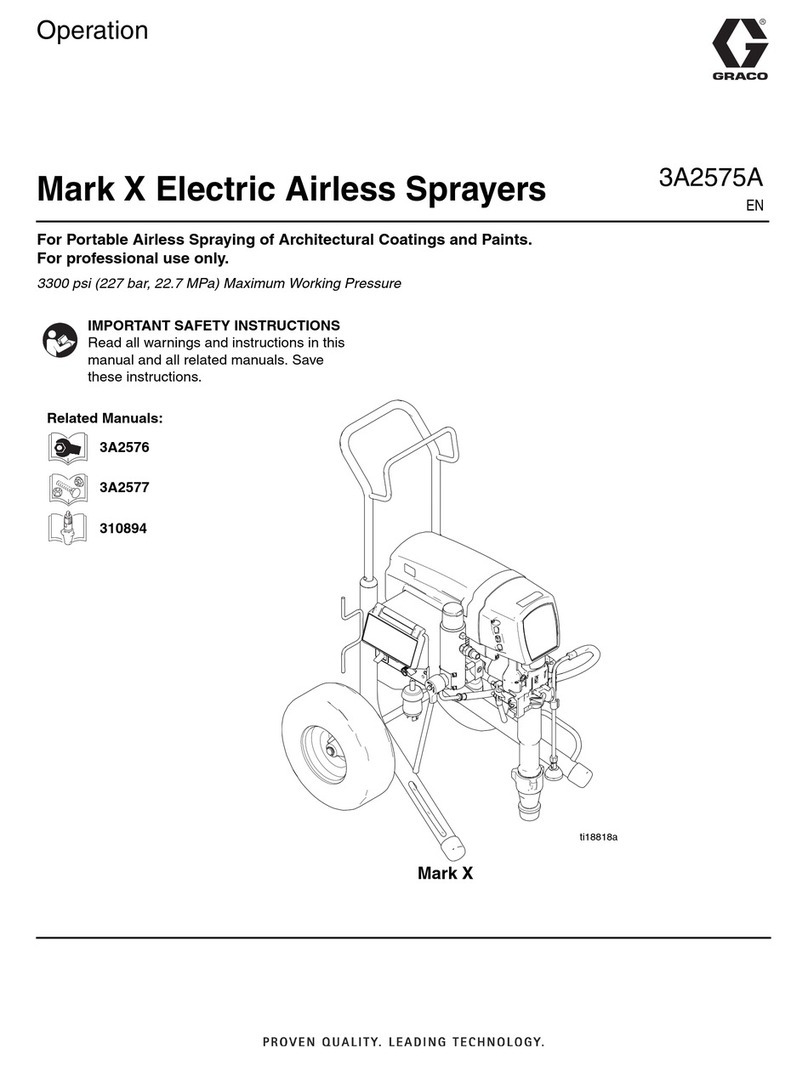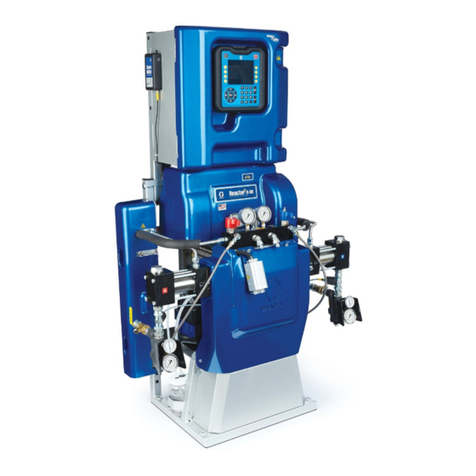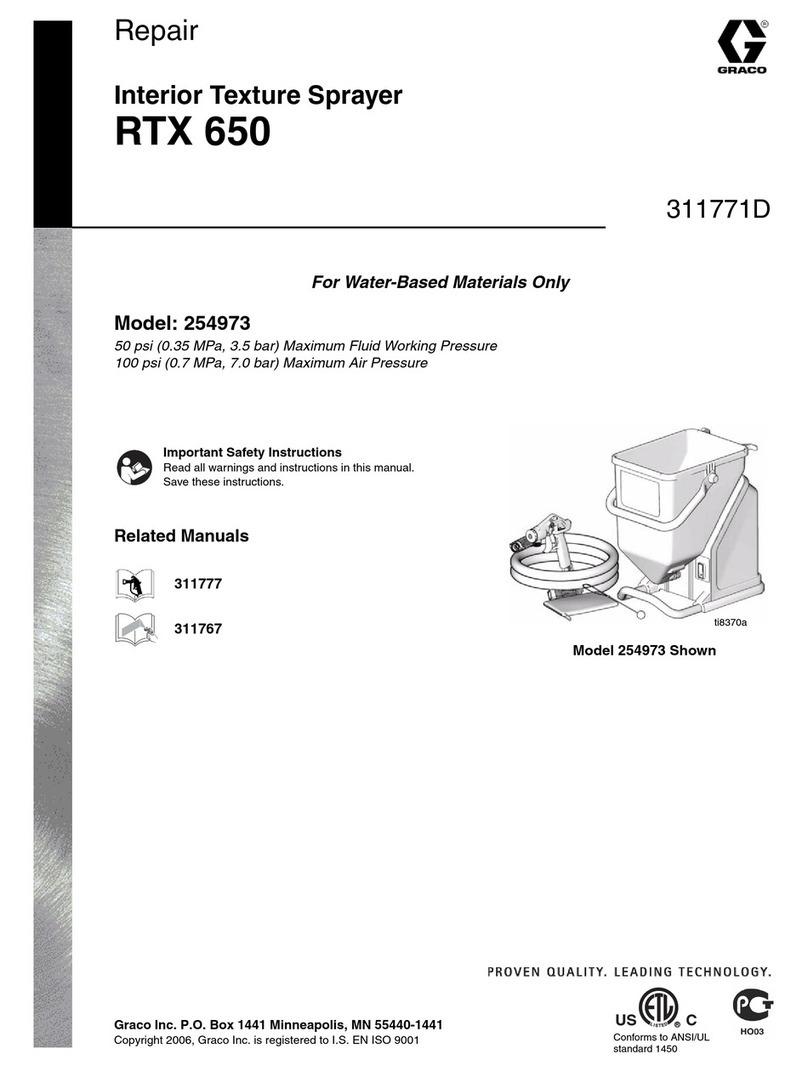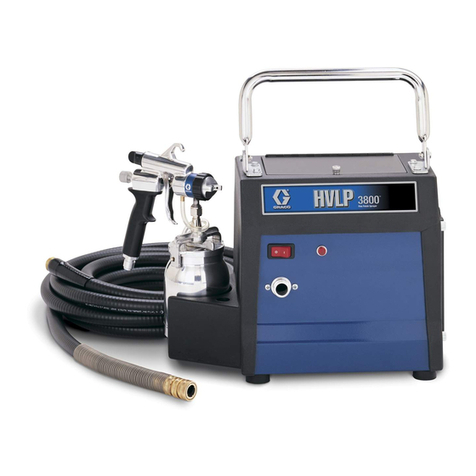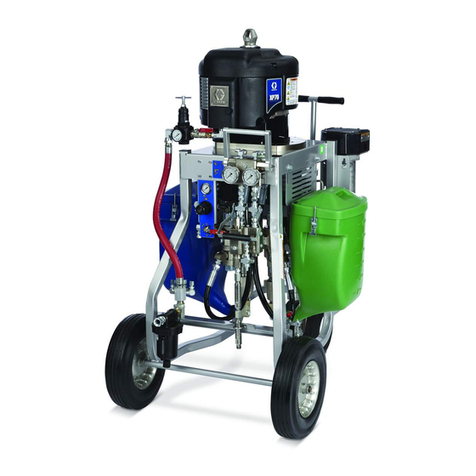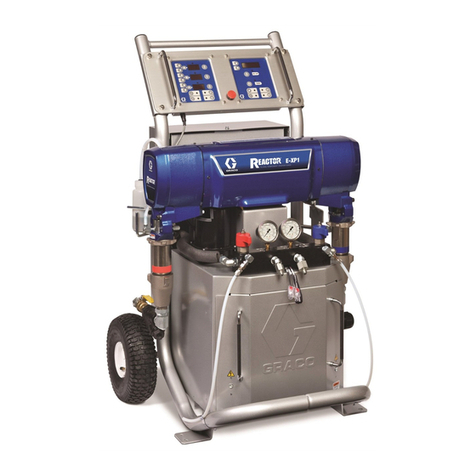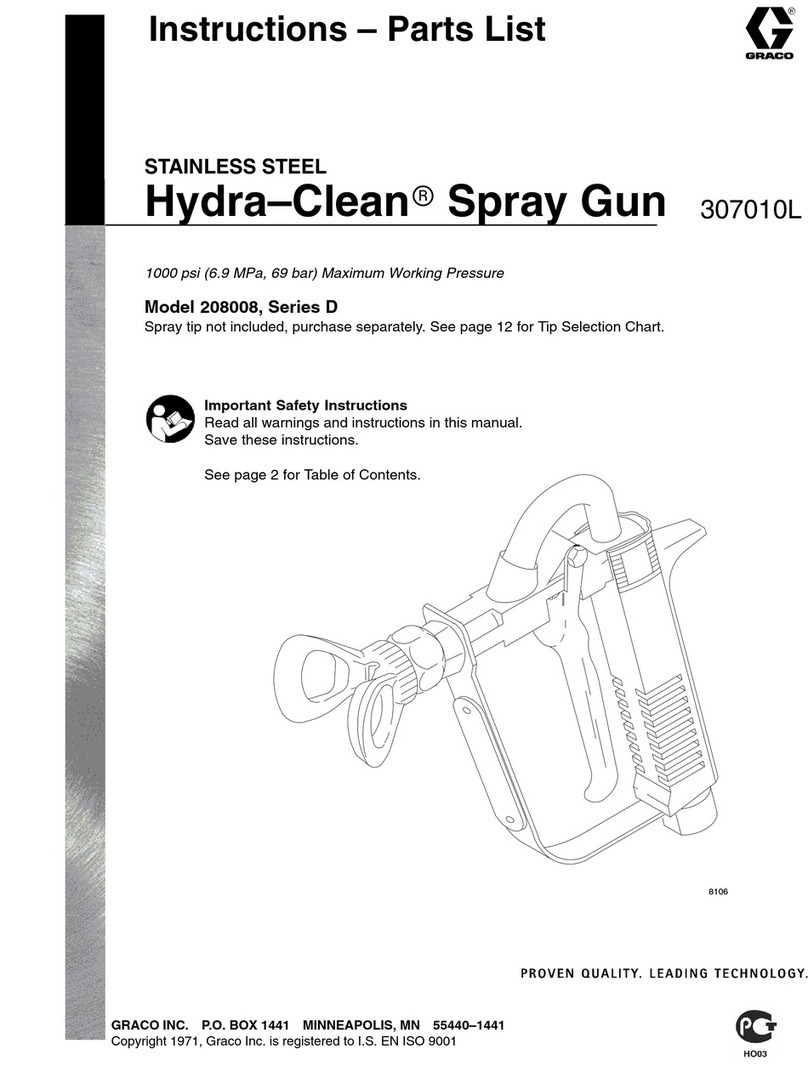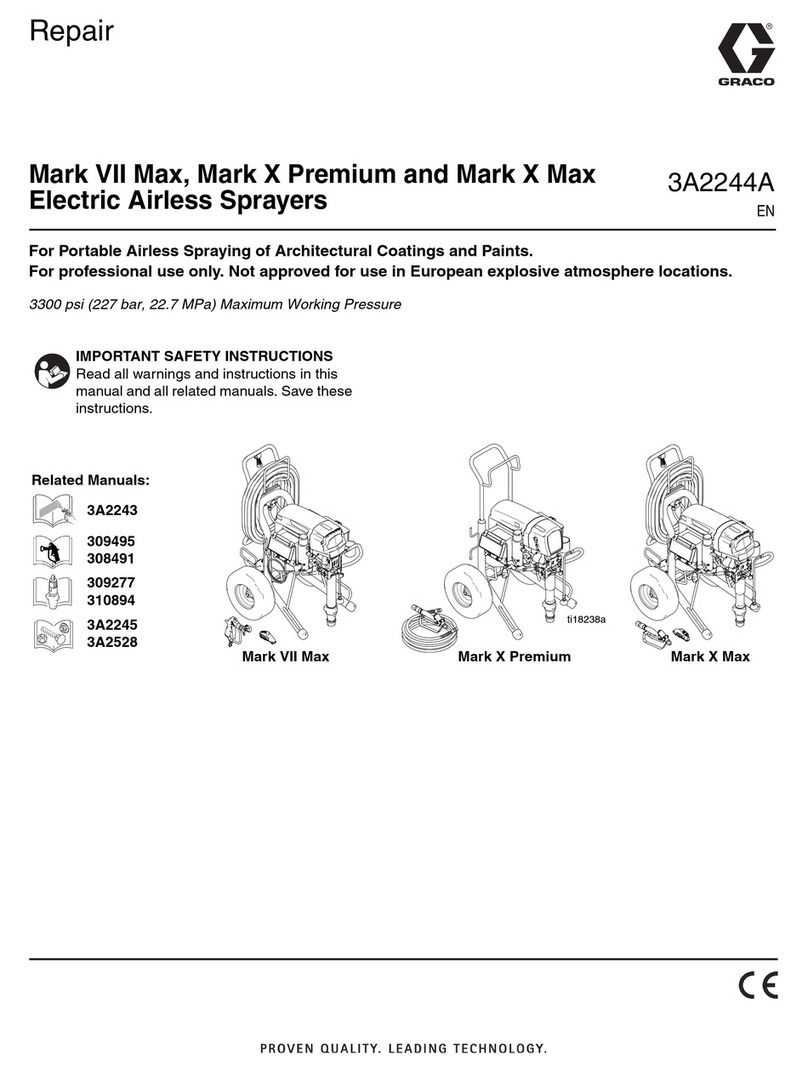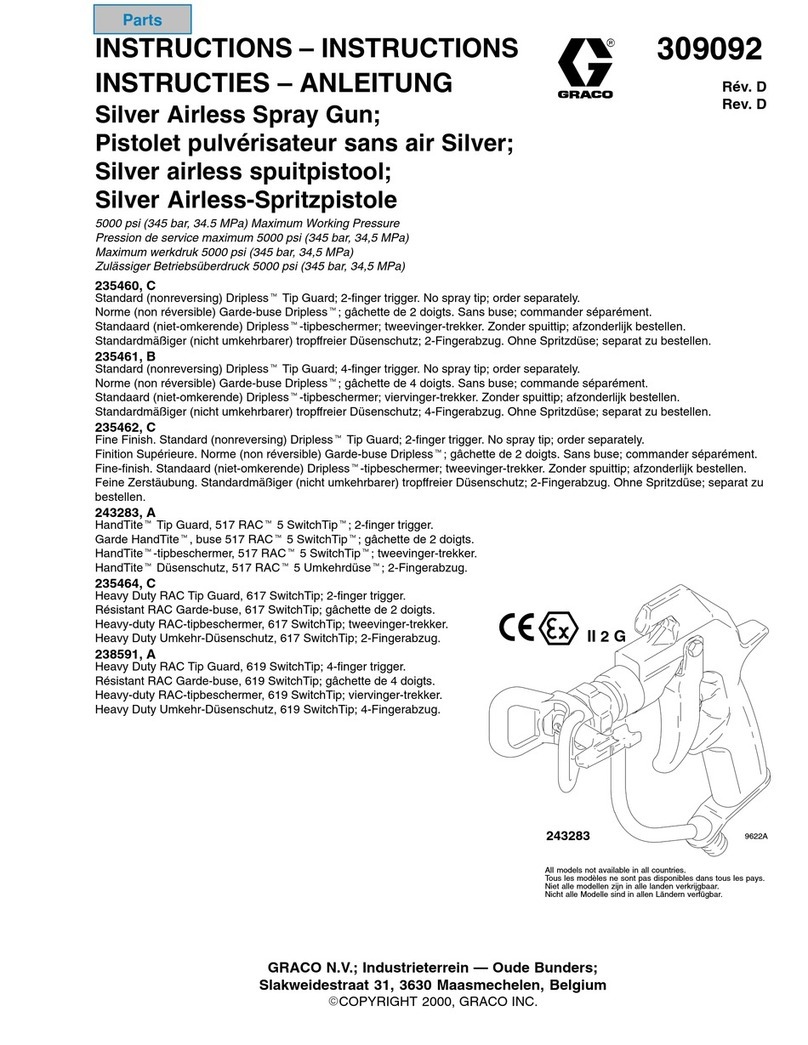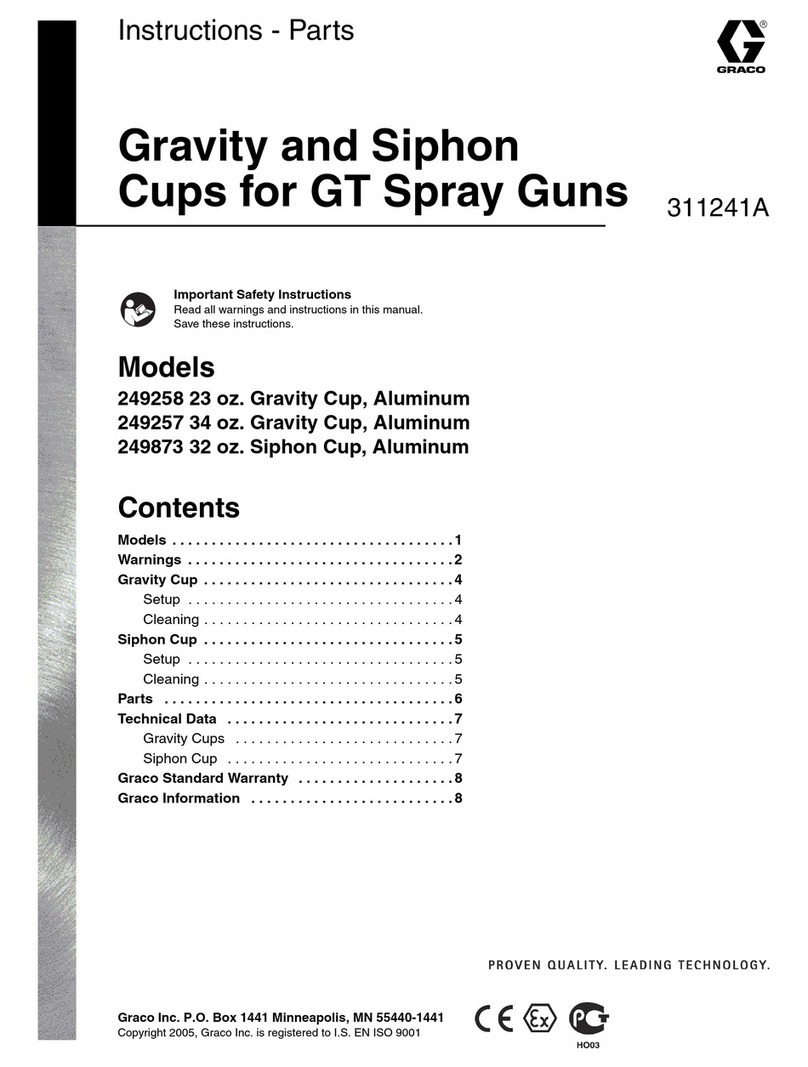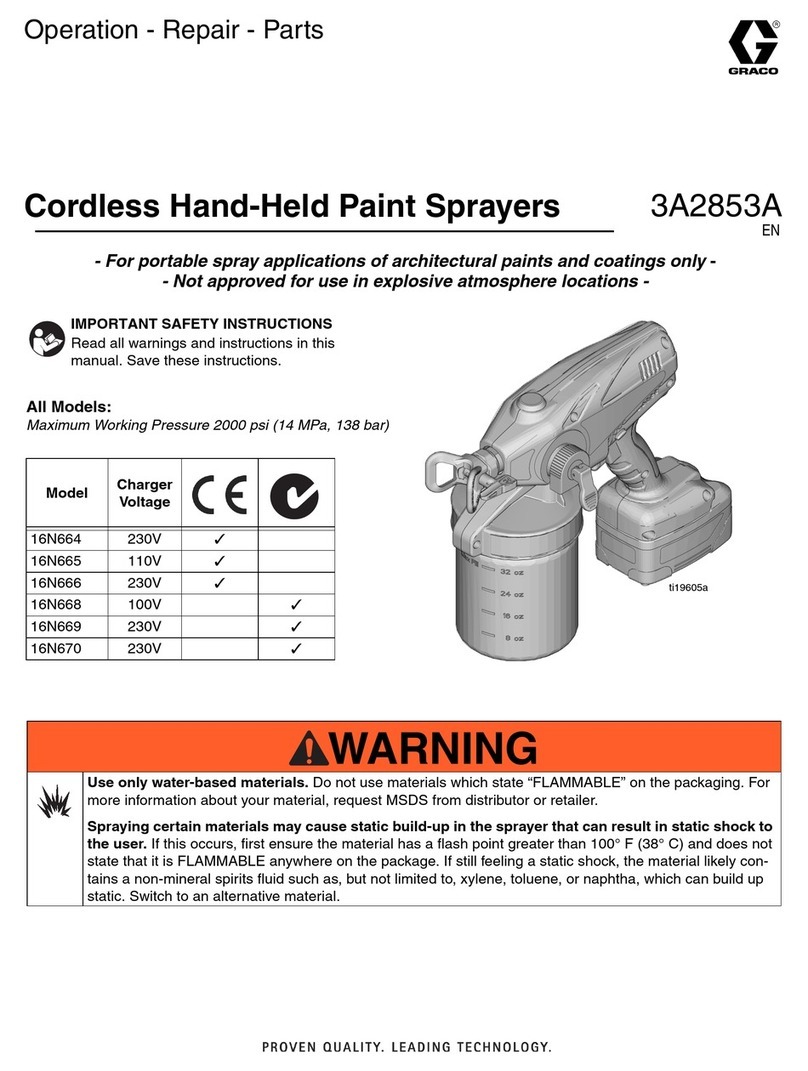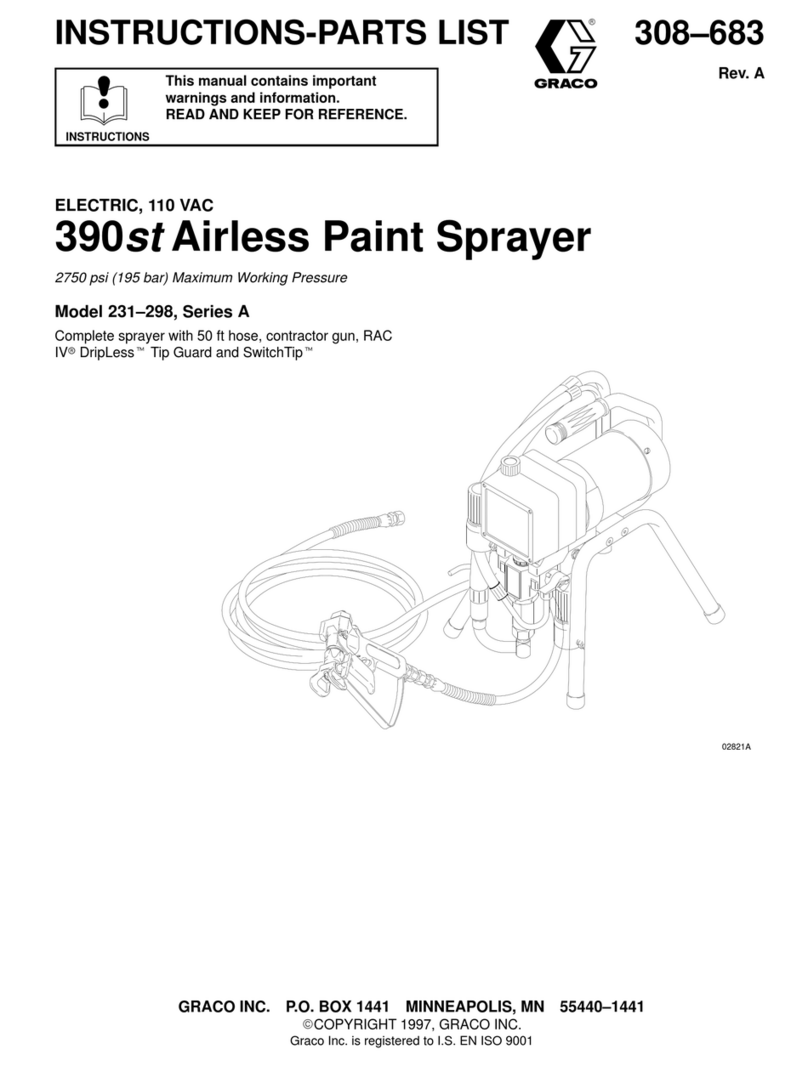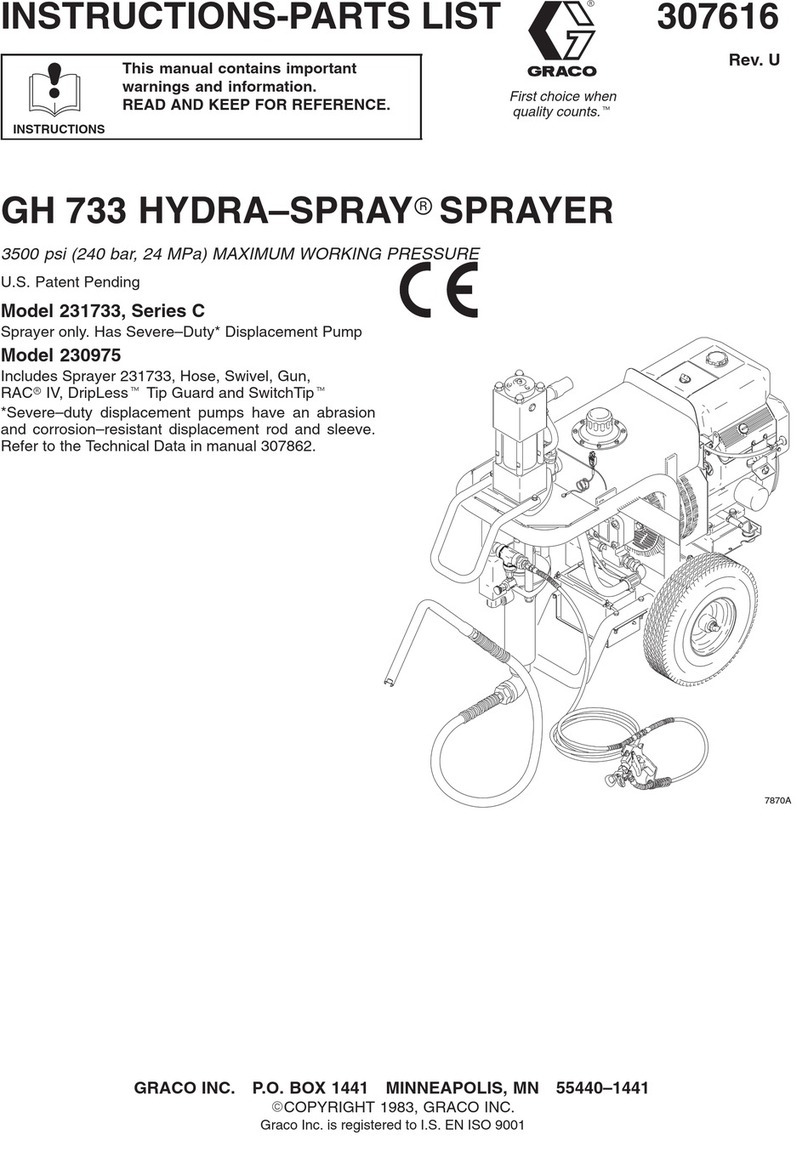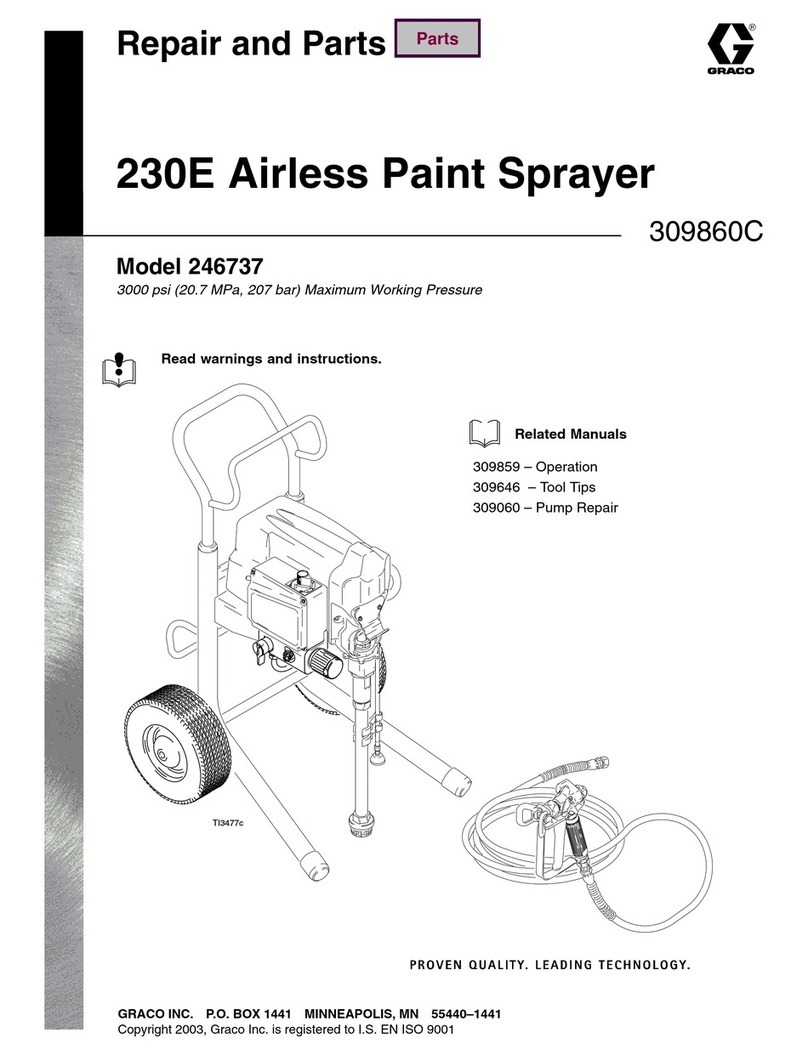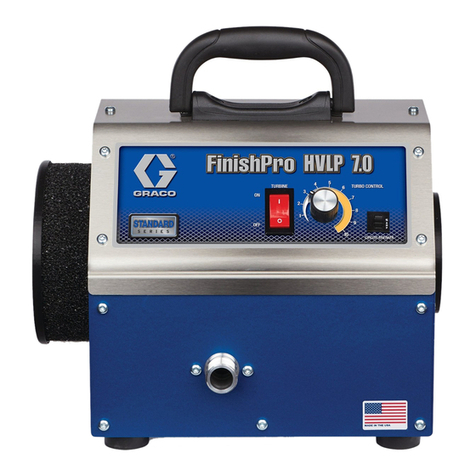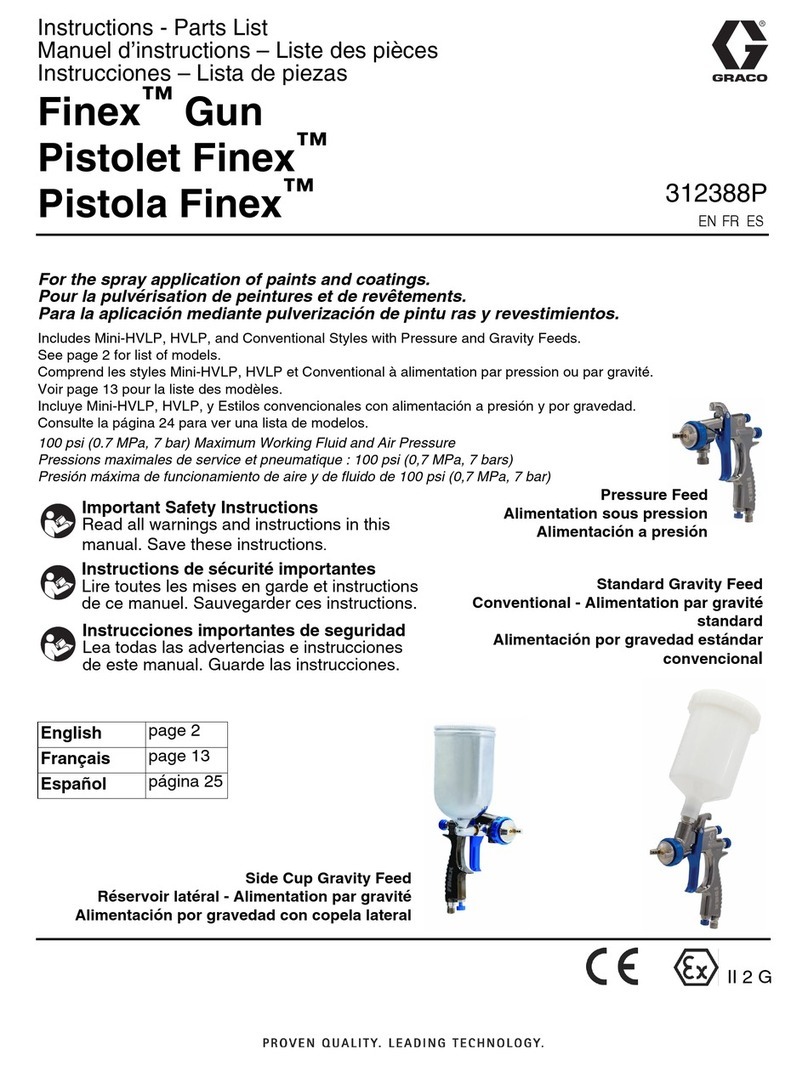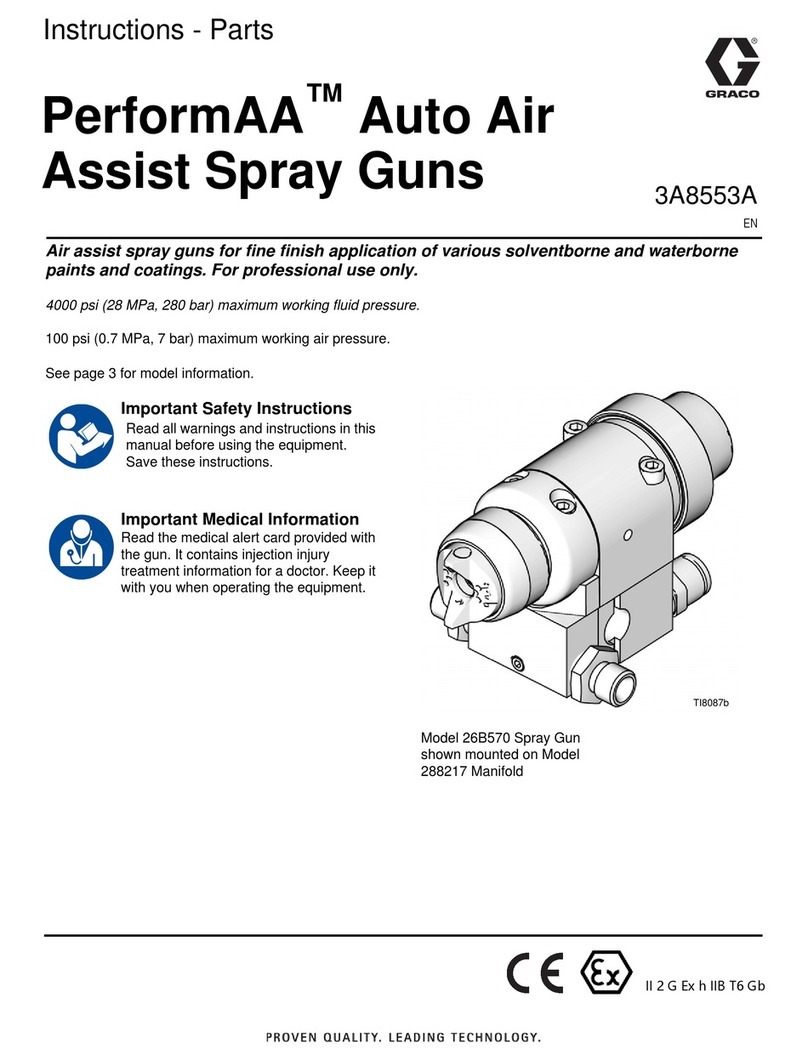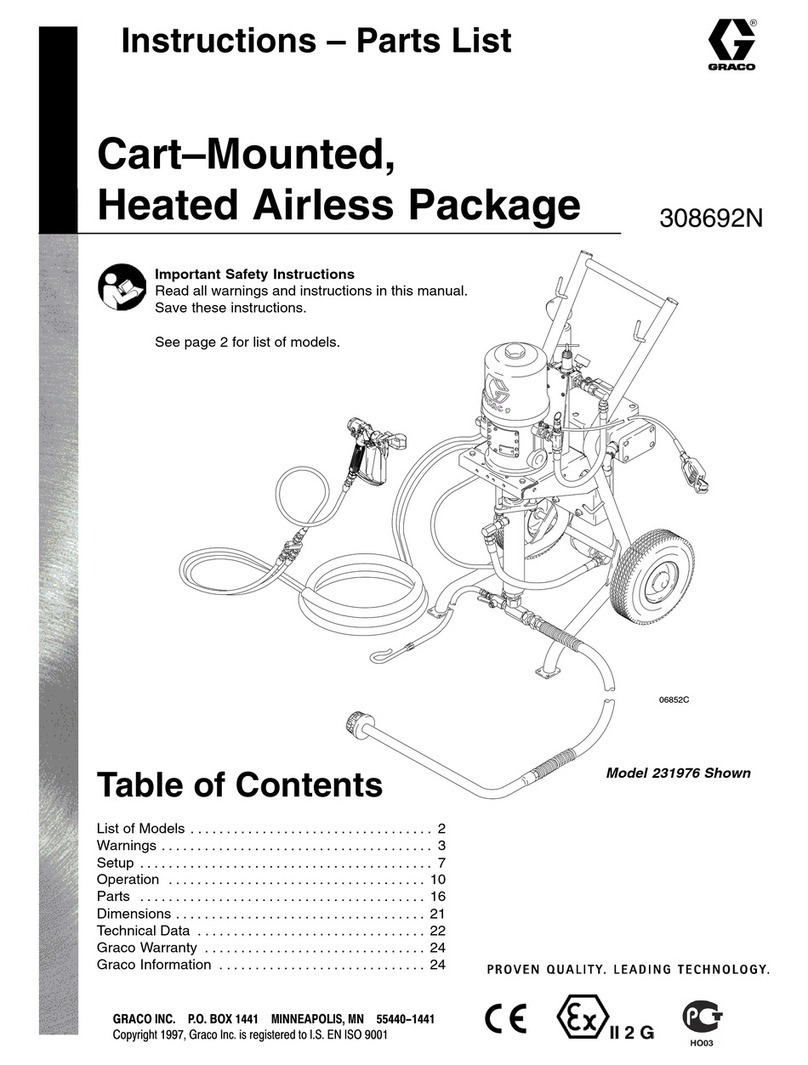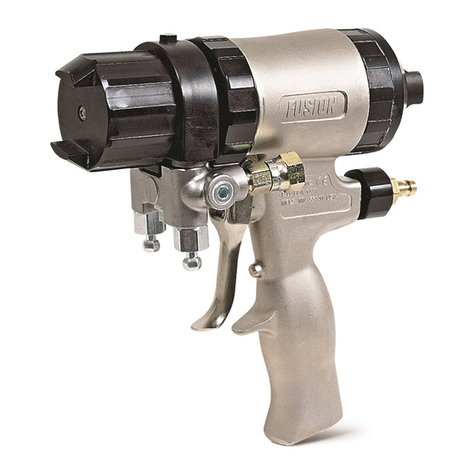
4 307546
WARNING
INSTRUCTIONS
EQUIPMENT MISUSE HAZARD
Equipment misuse can cause the equipment to rupture, malfunction, or start unexpectedly and result
in a serious injury.
DThis equipment is for professional use only.
DRead all the instruction manuals, tags, and labels before operating the equipment.
DUse the equipment only for its intended purpose. If you are uncertain about usage, call your Graco
distributor.
DDo not alter or modify this equipment. Use only genuine Graco parts and accessories.
DCheck the equipment daily. Repair or replace worn or damaged parts immediately.
DDo not exceed the maximum working pressure of the lowest rated system component. See the
front cover or the Technical Data for the maximum working pressure of your gun model.
DRoute the hoses away from the traffic areas, sharp edges, moving parts, and hot surfaces.
DDo not use the hoses to pull the equipment.
DUse only Graco approved hoses. Do not remove hose spring guards, which help protect the hose
from rupture caused by kinks or bends near the couplings.
DUse fluids or solvents that are compatible with the equipment wetted parts. See the Technical
Data section of all the equipment manuals. Read the fluid and solvent manufacturer’s warnings.
DComply with all applicable local, state and national fire, electrical and other safety regulations.
PLURAL COMPONENT MATERIAL HAZARD
Before using this equipment, read the material manufacturer’s warnings and determine all facts relat-
ing to the materials used, including any of the potential hazards relating to toxic fumes, fires, explo-
sions, reactions times, and exposure of humans to the individual components or their resultant mix-
tures.
DWear appropriate protective clothing, gloves, eyewear, face mask, and respirator.
DKnow the specific hazards of the fluid you are using. Read the fluid manufacturer’s warnings.
DGraco does not manufacture or supply any of the reactive chemical components that may be used
in this equipment and is not responsible for their effects. Graco assumes no responsibility for loss,
damage, expense or claims for personal injury or property damage, direct or consequential, arising
from the use of such chemical components.
DStore hazardous fluid in an approved container. Dispose of hazardous fluid according to all local,
state, and national guidelines.
HOT MATERIAL HAZARD
Heated foam can cause severe burns and can cause equipment surfaces to become very hot. To
avoid a burn or injury from the foam adhering to the skin:
DWear protective gloves and clothing when operating the equipment in a heated system.
DDo not come in contact with the dispensed material until it has cooled and cured.
DAllow the equipment to cool thoroughly before servicing.
DIf you are burned, get emergency medical care at once. Do not pull the foam from your skin.
